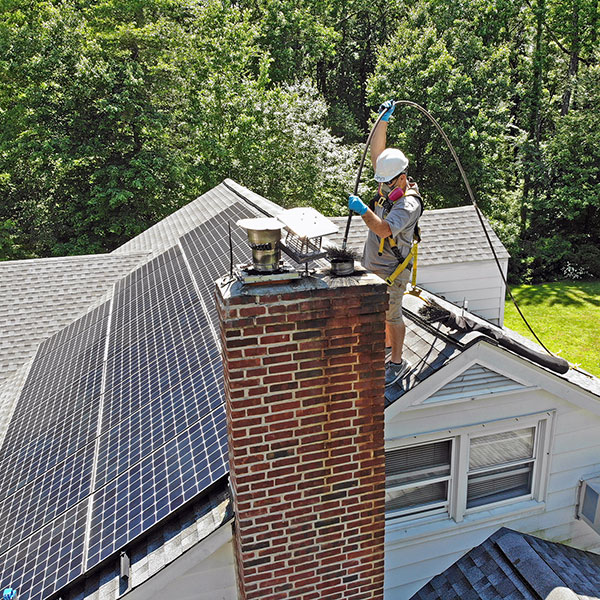Do Chimney Cleaning Logs Really Work?
 Wood-burning fires create a wonderful ambiance, but the creosote they produce has many people wondering if chimney cleaning logs work. Creosote is highly flammable, and it creates more buildup in the flue with every log burned in the fireplace. The danger of creosote together with the frequency of chimney cleaning that might be needed motivates plenty of fireplace users to give chimney cleaning logs a try. Many are aware, however, that the question is a controversial topic of debate among chimney professionals. Do chimney cleaning logs really work or not?
Wood-burning fires create a wonderful ambiance, but the creosote they produce has many people wondering if chimney cleaning logs work. Creosote is highly flammable, and it creates more buildup in the flue with every log burned in the fireplace. The danger of creosote together with the frequency of chimney cleaning that might be needed motivates plenty of fireplace users to give chimney cleaning logs a try. Many are aware, however, that the question is a controversial topic of debate among chimney professionals. Do chimney cleaning logs really work or not?
Creosote Hazards
Creosote, the catalyst behind the cleaning log controversy, is a tar-like combustion byproduct that has three distinctly different stages, as follows:
Early-Stage Creosote Buildup
The early-stage buildup of creosote is easy to remove. It contains a large amount of soot and is effectively removed using a professional chimney sweep brush.
Mid-Stage Creosote Buildup
Mid-stage creosote looks like hardened, sooty flakes. Sometimes they have a rock-like and highly porous appearance. The conditions that are often associated with this type of creosote include the following:
- The fireplace or wood-burning stove has glass doors or
- The incoming airflow into the fireplace is severely restricted.
Removing mid-stage creosote is more difficult than early-stage buildup. Professional chimney sweeps have the correct tools as well as the training and expertise to quickly remove mid-stage creosote buildup.
Late-Stage Creosote Buildup
Late-stage creosote buildup is extremely difficult to remove, and the safest course of action is often to simply replace the chimney liner. This type of creosote looks as if tar has been poured down the chimney. Late-stage creosote buildup hardens into waxy layers that adhere to the chimney flue.
The following are among the factors that are associated with the development of what is referred to as late-stage or stage three creosote buildup:
- Unseasoned wood has been burned frequently.
- The combustion air flow is insufficient.
- Air controls on a wood stove are set up improperly.
- The flue is oversized for the appliance.
Even with many industry tools and training in various techniques for dealing with creosote buildup, professional chimney sweeps sometimes find it impossible to remove late-stage creosote.
What Does a Chimney Cleaning Log Accomplish?
The answer to whether chimney cleaning logs really work depends on the answer you are looking for. There is general agreement that chimney cleaning logs can provide additional protection to guard against hazardous chimney fires. When chimney cleaning logs are burning, chemicals are released that adhere to the chimney liner walls. The expected results are two-fold, as follows:
- The logs are expected to loosen tar-like creosote buildup, and
- They lessen the combustibility of the creosote, which can help to prevent dangerous chimney fires.
A complication with creosote being loosened is that it can result in debris falling into an area of the chimney where hazardous blockage could develop or where it could potentially cause an out-of-control house fire.
 Call Mercer County Chimney Service
Call Mercer County Chimney Service
In spite of the debate about whether chimney cleaning logs work, there is an agreement that the logs cannot eliminate the need for professional chimney sweep services.
Contact Mercer County Chimney Service at 609-802-5288 for reliable chimney cleaning to remove creosote buildup as well as chimney inspections, masonry repairs, and every type of chimney maintenance and repair service. Call Mercer County Chimney Service today.


